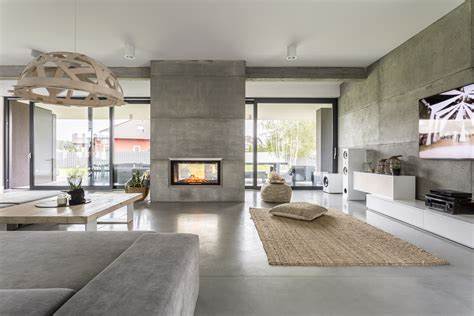How To Use Concrete For Interior Design In Bonita?

- Concrete’s sleek and minimalistic appearance pairs well with various design styles, but it particularly shines when contrasted with softer elements. Consider combining concrete with warm textiles, plush rugs, and soft furnishings to balance its coldness. This contrast not only adds visual interest but also creates a harmonious blend of textures that make the space inviting and comfortable.
- Concrete doesn’t have to be gray and dull. Experiment with different colors and finishes to suit your design vision. From pale pastels to deep earth tones, concrete can be tinted to match your desired palette. Additionally, you can choose between polished, textured, or even patterned finishes to create unique visual effects. These choices allow you to tailor the material to fit various design aesthetics.
- Concrete is not only visually appealing but also functional. Consider using it to craft custom furniture pieces like countertops, tables, or even sinks. Its durability and resistance to wear make it an ideal choice for high-traffic areas. Incorporating concrete elements in your interior design not only adds an aesthetic edge but also provides practicality and longevity to your space.
- Think beyond the traditional use of concrete as flooring or walls. Get creative by integrating concrete into unexpected areas of your interior design. Install concrete panels as a unique backsplash in the kitchen, create a statement wall with textured concrete tiles, or even design a fireplace surround using this versatile material. These unconventional applications will make your space stand out and showcase your design ingenuity.
- Concrete’s reflective properties can impact the acoustics of a room. To mitigate excessive echoing, consider incorporating soft furnishings, rugs, and curtains to absorb sound. Additionally, strategic placement of decorative elements can help disperse sound waves and improve the overall auditory experience in the space. Moreover, concrete’s neutral tone can sometimes absorb light, so ensure ample lighting sources to maintain a well-lit and inviting ambiance.
FAQs
Is Concrete Suitable For Homes With A Traditional Design Style?
Yes, concrete can be adapted to various design styles, including traditional ones. By incorporating warm colors, intricate patterns, and softer furnishings, you can make concrete work seamlessly in a traditional interior.
How Do I Maintain Concrete Surfaces In Interior Spaces?
Regular cleaning with a mild detergent and water is usually sufficient to maintain concrete surfaces. Sealing the concrete periodically can help protect it from stains and enhance its longevity.
Is Concrete Eco-Friendly For Interior Design?
Concrete can be environmentally friendly if sourced and produced responsibly. Opt for locally sourced materials and inquire about low-carbon concrete options to reduce its environmental impact.
Conclusion
Concrete’s transformation from an industrial material to a design element for interior spaces has opened up a world of creative possibilities. By following these tips, you can seamlessly incorporate concrete into your interior design, adding a modern edge while maintaining comfort and functionality. With its versatility, durability, and ability to adapt to various styles, concrete proves that beauty truly can be found in the most unexpected places. So, go ahead and explore the unique charm that concrete can bring to your living spaces. For more information, contact Concrete Contractor Bonita at (619) 494-1611.